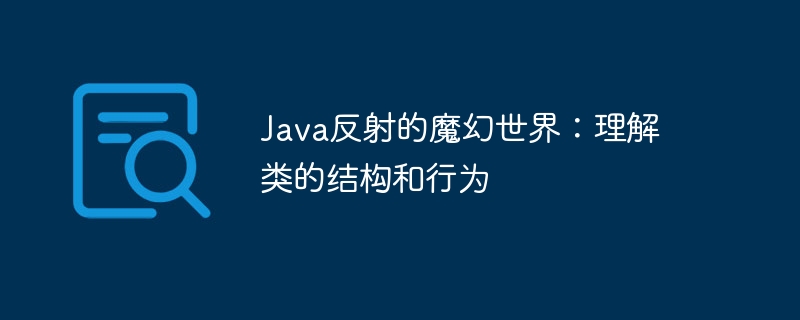Home >Java >javaTutorial >The Magical World of Java Reflection: Understanding the Structure and Behavior of Classes
The Magical World of Java Reflection: Understanding the Structure and Behavior of Classes
- WBOYWBOYWBOYWBOYWBOYWBOYWBOYWBOYWBOYWBOYWBOYWBOYWBforward
- 2024-02-19 21:48:23898browse

php editor Xinyi will take you to explore the mysterious world of Java reflection. By understanding the structure and behavior of classes, we can have an in-depth understanding of the operating mechanism of Java reflection and explore its mysteries and possibilities. Java reflection technology not only allows us to dynamically operate the properties and methods of classes, but also enables advanced functions such as automatic code generation, debugging and testing. Let us uncover the veil of Java reflection and explore its unique magical charm!
Class<?> clazz = Class.forName("com.example.Person");
The above lines of code obtain the Class object of the Person class, which contains all the information of the Person class.
With the Class object, we can access the members of the class. Among them, class methods are the most common, and reflection allows us to call them dynamically. This can be achieved through Method objects. The Method object represents a method of a class, which we can obtain through the getMethod() or getMethods() method of the Class object. Once you get the Method object, you can call the method directly, such as:
Method method = clazz.getMethod("getName");
Object name = method.invoke(Person);The above is the detailed content of The Magical World of Java Reflection: Understanding the Structure and Behavior of Classes. For more information, please follow other related articles on the PHP Chinese website!

